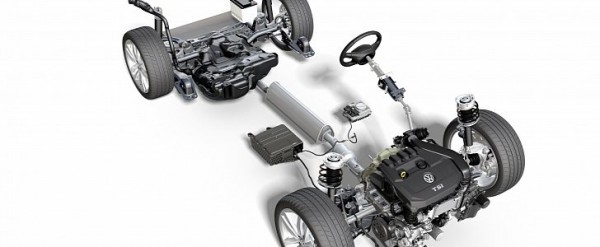
We see a normal 12-volt system that powers normal car functions. However, the battery has been relocated under the trunk floor for better weight distribution. At the same time, the TSI is augmented with a new 48-volt mild-hybrid drive. This architecture features a belt-integrated starter generator (BSG), which is located where the alternator used to be in the auxiliary drive and controls two central operating functions: recuperation and boost.
During recuperation, the BSG catches some of the lost energy and stores it in a 48-volt lithium-ion battery (and this is the interesting part) located under the front passenger seat. The small motor also boosts the 1.5 TSI somehow and takes the job of the pinion starter.
In addition, the MHEV version of the 1.5-liter turbo also has a cost function where the car rolls with the engine switched off, though lots of other cars do that too. We believe that we're dealing with the new BlueMotion technology for the Golf 8, which won't rely on a TDI for fuel-sipping duties.
“We want to offer every customer the standard of mobility they expect. And we want to offer exactly the type of mobility needed in each and every market. This is why we have built our drivetrain strategy around a broad mix of technology,” explains Dr Frank Welsch, member of the Brand Board of Management, who will give the opening speech at Vienna’s Hofburg palace on Wednesday. “Our portfolio of drives ranges from semi-electrified variants like the mHEV through to fully electric vehicles based on our new development, the MEB electric platform.”
Volkswagen will still offer a wide variety of powertrains that cater to different market demands, but EVs will get a huge slice of the development money. The company already has 15,000 orders for the "affordable" ID.3 hatchback with up to 550km of range and 150kW of power, though more models are sure to follow shortly. In Vienna, they will offer more insight into the challenges posed by reaching Level 3 and 4 of autonomous driving.








